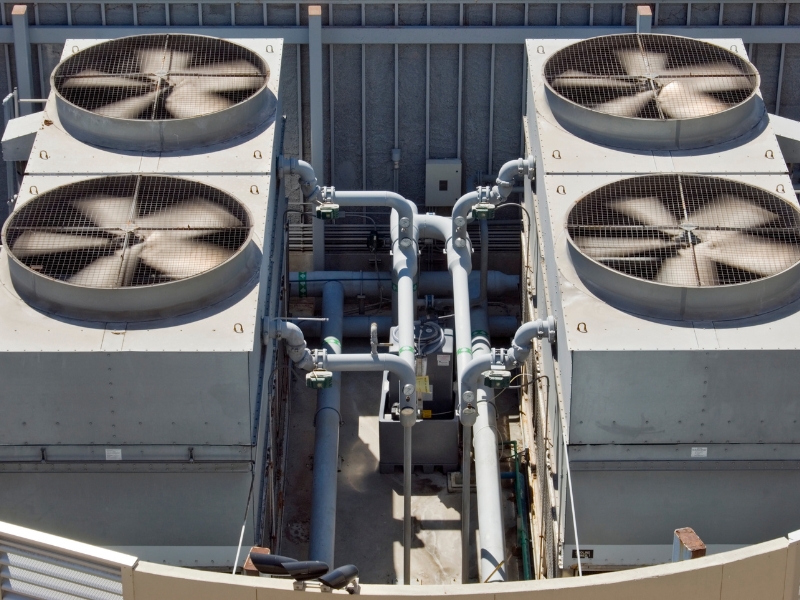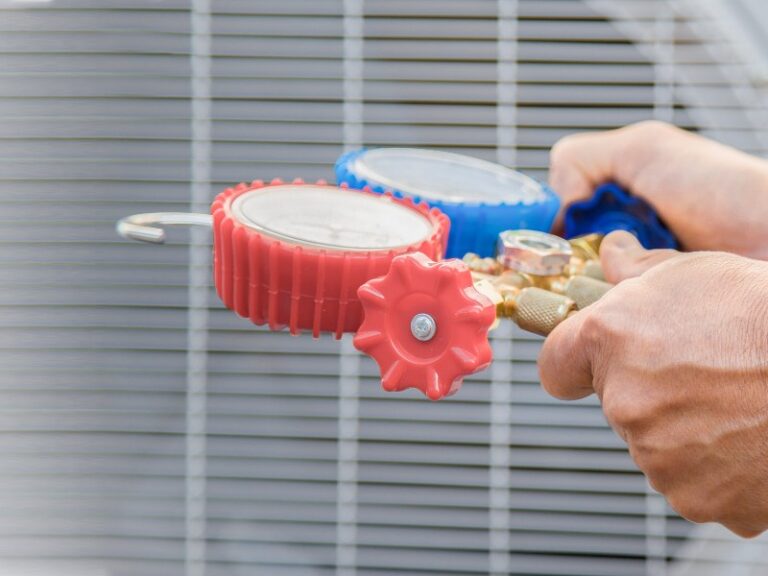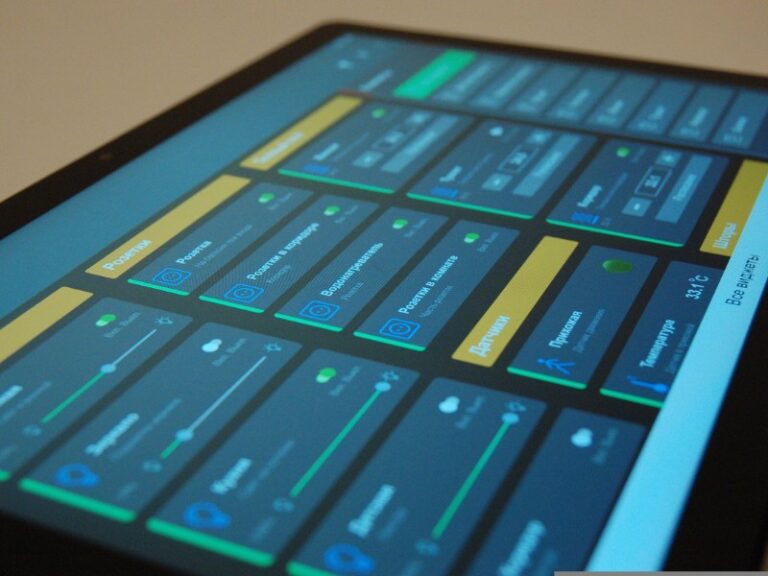As the world grapples with the growing impacts of climate change, industries across the globe are beginning to adapt. HVAC (Heating, Ventilation, and Air Conditioning) systems, which are crucial for maintaining indoor comfort, are no exception. The changing climate, characterized by more extreme temperatures, fluctuating weather patterns, and increased energy demands, is reshaping how HVAC systems are designed, installed, and maintained.
In this article, we’ll explore the impact of climate change on HVAC system design and efficiency, the challenges it presents, and how the industry is adapting to ensure comfort and sustainability in an increasingly unpredictable climate.
How Climate Change Affects HVAC Systems
Climate change is causing more extreme weather events, from record-high temperatures in the summer to harsh winters. These shifts are placing new demands on HVAC systems, making it more critical than ever to design systems that can handle varying conditions while optimizing energy consumption and system efficiency. Let’s examine the key ways climate change is influencing HVAC systems:
1. Increased Cooling Demand
One of the most noticeable impacts of climate change is the rising global temperatures. Longer and hotter summers are causing an increase in the demand for cooling in homes, offices, and commercial buildings. With more days of extreme heat, air conditioners and cooling systems are now required to run for longer periods, placing additional strain on HVAC systems.
- Impact on HVAC Systems: HVAC systems, especially air conditioners, will need to work harder to cool buildings, leading to increased energy consumption and potentially higher utility bills.
- Design Consideration: Modern HVAC systems must be designed with higher cooling capacities to accommodate longer periods of extreme heat. This may require larger units, more powerful compressors, and upgraded ductwork to ensure optimal cooling performance.
2. Higher Humidity Levels
Alongside higher temperatures, climate change is leading to increased humidity in certain regions. High humidity not only makes the air feel warmer but also puts additional stress on cooling systems. Excess moisture in the air can lead to problems like mold growth and poor indoor air quality (IAQ) if not properly managed.
- Impact on HVAC Systems: HVAC systems must manage both temperature and humidity, leading to a greater focus on dehumidification capabilities. This can increase the load on the air conditioning system, reducing its overall efficiency and increasing operating costs.
- Design Consideration: To address this, HVAC systems need to be equipped with more effective dehumidification features, such as advanced drainage systems and humidistats, to regulate both temperature and moisture levels in the air.
3. Extreme Weather Events and System Resilience
Extreme weather events—including heatwaves, tornadoes, hurricanes, and winter storms—are becoming more frequent due to climate change. These events can disrupt building systems and cause HVAC units to fail or underperform due to power outages, system overloads, or physical damage.
- Impact on HVAC Systems: Extreme temperatures, power surges, and physical damage can lead to frequent HVAC breakdowns, leading to costly repairs and unplanned downtime.
- Design Consideration: To adapt, HVAC systems must be designed for greater resilience, including features like backup power systems, hurricane-resistant units, and weatherproofing to ensure the system can handle extreme conditions.
4. Changing Energy Consumption Patterns
As HVAC systems are used more frequently to combat extreme heat and humidity, there is an inevitable increase in energy consumption. This growing demand for energy puts pressure on the electrical grid and can lead to higher energy costs, which is a significant challenge for both residential and commercial buildings.
- Impact on HVAC Systems: As energy consumption increases, buildings may face higher operating costs, especially if they rely on traditional energy sources. Additionally, overburdened energy grids can lead to voltage fluctuations, power outages, or inefficient system operation.
- Design Consideration: The HVAC industry is increasingly turning to energy-efficient technologies and renewable energy sources (such as solar panels and geothermal energy) to meet the rising demand for cooling and heating. Incorporating smart thermostats and demand-controlled ventilation can also optimize system operation and reduce energy consumption.
Adapting HVAC Systems to Climate Change
The HVAC industry is actively responding to the challenges presented by climate change. From system design to maintenance practices, there are several ways that HVAC professionals are adapting to the changing climate to improve energy efficiency, comfort, and system longevity.
1. Emphasis on Energy Efficiency
Energy-efficient HVAC systems are crucial in the fight against climate change. By reducing energy consumption, these systems help minimize the carbon footprint and reduce the strain on the electrical grid.
- Energy-Efficient Features:
- Variable-speed fans and compressors: These adjust to the needs of the space, reducing energy waste and improving system efficiency.
- High SEER (Seasonal Energy Efficiency Ratio) and AFUE (Annual Fuel Utilization Efficiency) ratings: High-efficiency systems use less energy to perform the same task.
- Heat pumps: These devices provide both heating and cooling and are often more energy-efficient than traditional systems.
2. Incorporating Smart Technology
The rise of smart technology has revolutionized HVAC system control, making it possible to optimize performance based on real-time conditions.
- Smart Features:
- Smart thermostats: Devices like Nest and Ecobee learn occupancy patterns and adjust the system settings accordingly, ensuring energy is only used when necessary.
- Automated sensors: IoT (Internet of Things) sensors in HVAC systems can adjust air conditioning and heating based on occupancy, temperature, and humidity in real-time.
- Zoning systems: These systems allow for customized temperature control in different areas of a building, reducing waste by conditioning only the spaces in use.
3. Integrating Renewable Energy Sources
To reduce the carbon footprint of HVAC systems, many buildings are incorporating renewable energy sources into their designs.
- Examples:
- Solar-powered HVAC systems: Solar panels can power air conditioning units and heat pumps, reducing reliance on traditional energy sources.
- Geothermal heating and cooling: Ground-source heat pumps use the earth’s consistent underground temperature to provide energy-efficient heating and cooling, reducing energy consumption significantly.
4. Focus on High-Performance Insulation and Building Materials
Another way HVAC systems are adapting to climate change is by incorporating advanced insulation and building materials into construction. Proper insulation helps reduce the workload of the HVAC system by maintaining consistent indoor temperatures, even during extreme weather events.
- Key Materials:
- Spray foam insulation: Provides superior air sealing and reduces heat transfer, improving HVAC efficiency.
- Reflective roofing: Reduces the amount of heat absorbed by the building, lowering cooling loads.
How CoolCalc Can Help HVAC Professionals Adapt to Climate Change
As climate change continues to influence HVAC system design, CoolCalc offers a powerful tool for cooling load calculations. By considering factors such as building insulation, outdoor temperatures, and energy efficiency goals, CoolCalc ensures that HVAC systems are properly sized for optimal performance in the face of extreme conditions.
- CoolCalc’s Key Features:
- Precise cooling load calculations based on building layout, insulation, and local climate data.
- Energy-efficient designs that consider long-term climate trends.
- Adaptable sizing for HVAC systems that account for potential temperature extremes.
Conclusion
Climate change is having a profound impact on HVAC system design and performance, making it essential for the HVAC industry to adapt. From increased cooling demand to rising energy consumption, HVAC systems must be designed to handle more extreme and fluctuating weather conditions. By integrating energy-efficient technologies, smart controls, renewable energy sources, and high-performance building materials, HVAC systems can meet the challenges posed by climate change while improving comfort and reducing energy consumption.
As the world continues to face the challenges of climate change, tools like CoolCalc are essential in ensuring that HVAC systems are properly sized and optimized for the future. By designing smarter, more energy-efficient systems, we can reduce our carbon footprint and create more sustainable buildings.




